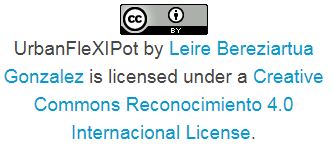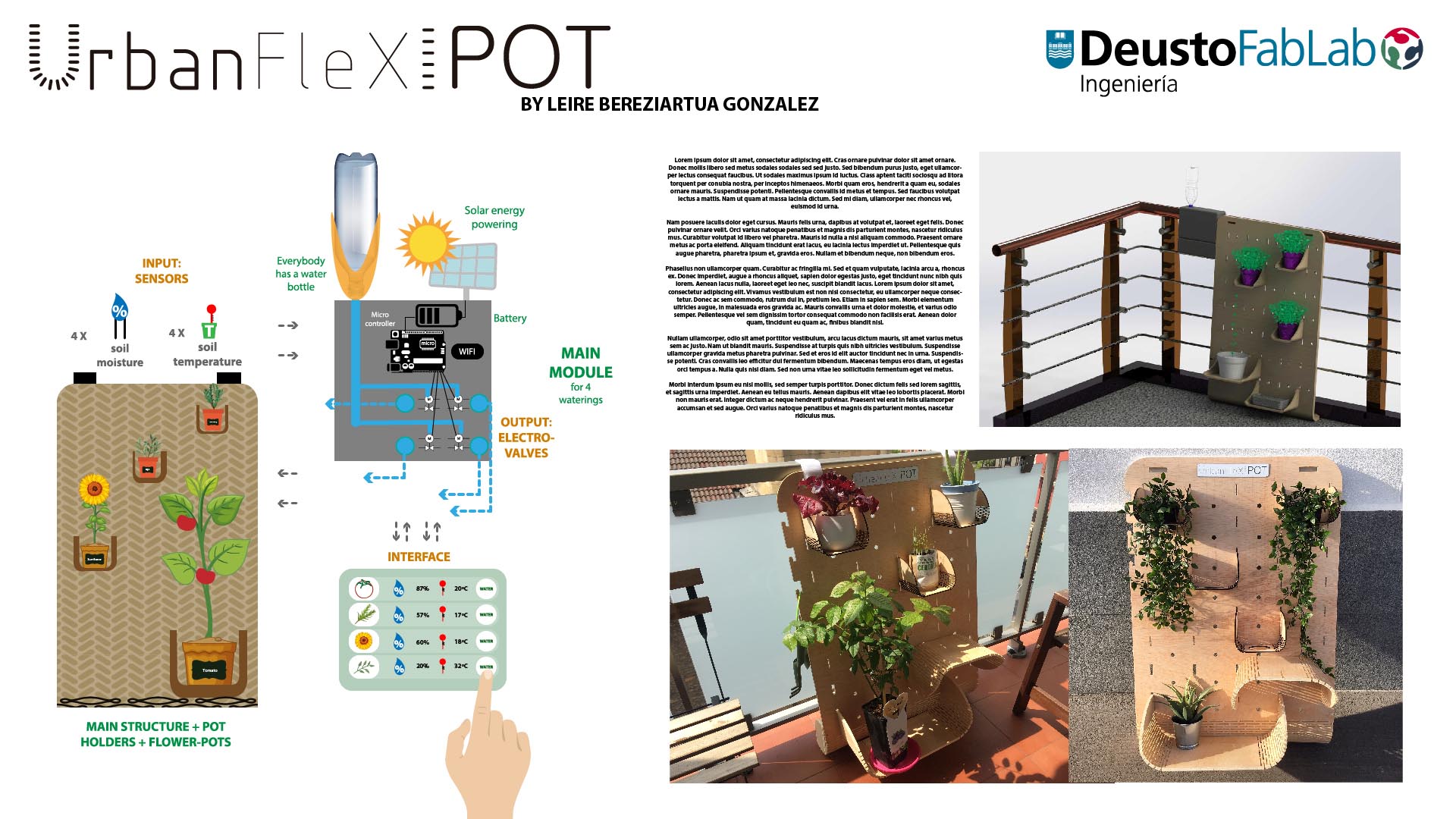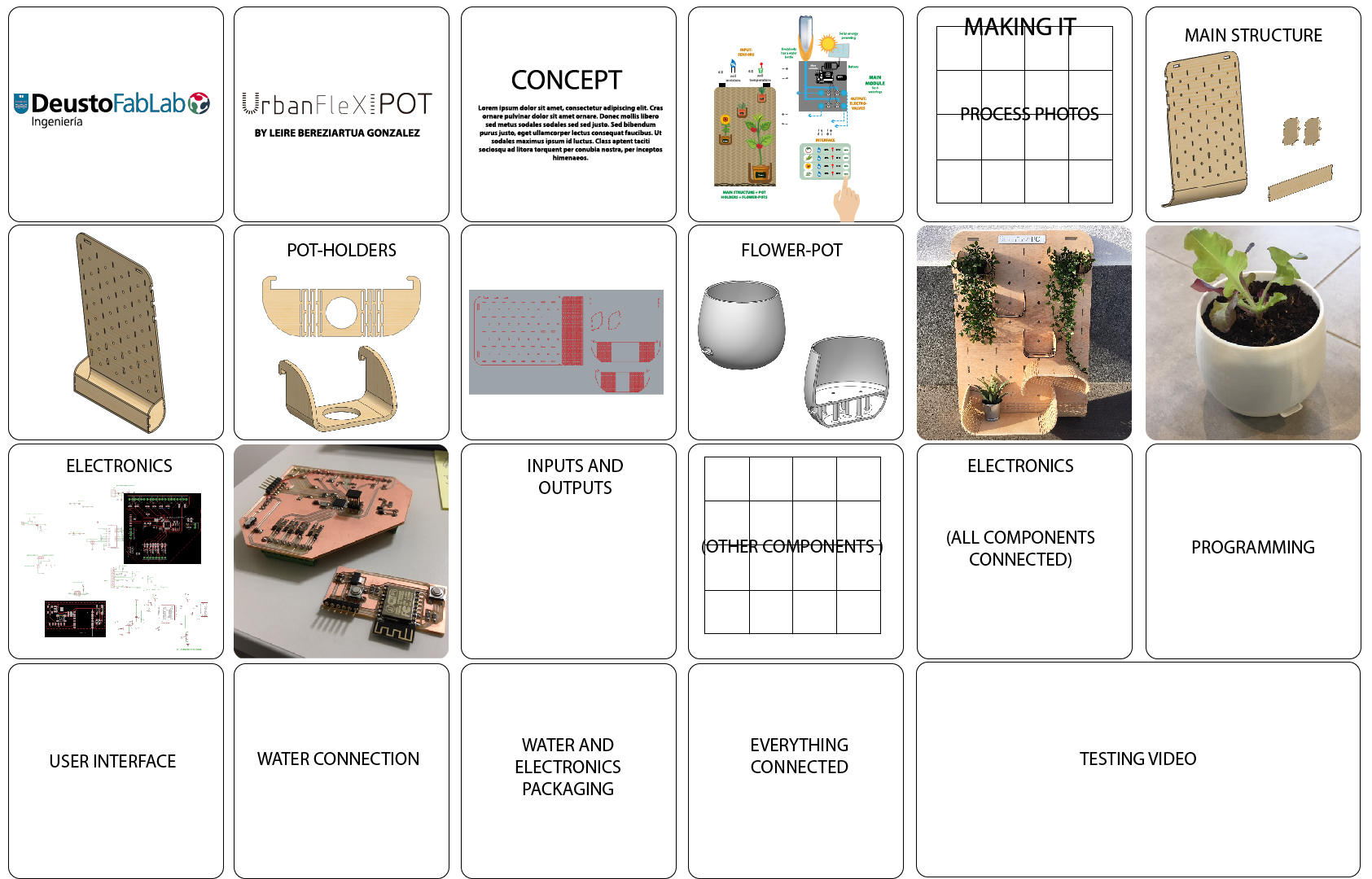Exercise 19. Invention, Intellectual Property, and Income
After the last lesson, on Wednesday 30th May, assignment for this week was:
_ develop a plan for dissemination of your final project _ prepare draft of your summary slide(presentation.png, 1920x1080) _ prepare draft of video clip(presentation.mp4, 1080p HTML5, less than 1 minute, less than 10 MB) + and put them in your root directory
Learning outcomes for this week:
_ Formulate future opportunities
COMMONS VS COPYRIGHT
COMMONS
UrbanFleXIPot is a product that will transcend into a singular artifact. Each one is unique because it is personalized and embedded with the needs and mistakes the author made while making it.
None of the processes or knowledge involved in this project can be considered an invention of mine, it is the result of an upward trend and I have relied on existing projects, wanting to improve them by applying a user's vision. I have build upon existing knowledge and informations therefore do not pretend to own any exclusive rights for it. If the fact that this object exists has had an effect on anyone's life or experience all I want is to be mentioned, atributed and cited as its author.
The licence that I have chosen for my project responds to this common rights criteria.
WHEN WE SHARE, EVERYONE WINS!
CREATIVE COMMONS (CC)
Creative Commons (CC) is an American non-profit organization devoted to expanding the range of creative works available for others to build upon legally and to share.[2] The organization has released several copyright-licenses known as Creative Commons licenses free of charge to the public. These licenses allow creators to communicate which rights they reserve, and which rights they waive for the benefit of recipients or other creators. An easy-to-understand one-page explanation of rights, with associated visual symbols, explains the specifics of each Creative Commons license.

Creative Commons licenses do not replace copyright, but are based upon it. They replace individual negotiations for specific rights between copyright owner (licensor) and licensee, which are necessary under an "all rights reserved" copyright management, with a "some rights reserved" management employing standardized licenses for re-use cases where no commercial compensation is sought by the copyright owner. The result is an agile, low-overhead and low-cost copyright-management regime, profiting both copyright owners and licensees.
I have created my own CC licence for my work at Creative Commons webpage, it allows to get a license following a few easy steps. This is my Creatice Common license I would like to apply to my project:

The webpage give a code to copy in our project webpage, which helps to add the image in our site and inform visitors about it.
UrbanFleXIPot by Leire Bereziartua Gonzalez is licensed under a Creative Commons Reconocimiento 4.0 Internacional License.
It allows:
+ to share — copy and redistribute the material in any medium or format. + Adapt - remix, transform, and build upon the material for any purpose, even commercially.
While at the same time compromise me and/or any user of the licence to:
Attribute — must give appropriate credit, provide a link to the license, and indicate if changes were made. You may do so in any reasonable manner, but not in any way that suggests the licensor endorses the use.
COPYRIGHT
Copyright is a form of intellectual property, applicable to certain forms of creative work. Some, but not all jurisdictions require "fixing" copyrighted works in a tangible form. It is often shared among multiple authors, each of whom holds a set of rights to use or license the work, and who are commonly referred to as rights holders.
This is the best known license, and unfortunately, the one that is most used. It is represented by a c inside a circle (see image) Copyright symbol. Normally the only person who can do what he pleases with his work is the author of it. In other words, the work has an owner and if you want it, you have to pay for it in addition to asking permission to use it. But let's give the case that you get the work of this author or company, because you can NOT legally redistribute it, because the only one qualified for it is the author of the work, that is, this license only allows you to have the work for personal use.
As I said, I would like to provoke an effect on anyone's life or experience, and I would like to promote urban gardens trend. I am not pretending to generate any direct income from the artifact created as final project. Neither through selling the original nor any reproduction of the product. So, if anyone want to take my project and improve it, adapt it, tranform it and share it, I will be happy! Feel free! I do not want a Copyright license.
DISSEMINATION
I would like to continue developing this project: I am using it in my home, and some friends and family members said to me to install another UrbanFleXIPot in their balconies, so it will be in continuous beta testing. I think it would be a very good opportunity to take feedback from real users.
And I have spoken with Experimenta Magazine director, Marcelo Leslabay, and he is very interested on making a publication about my final project. So, during next year 2019, UrbanFleXIPot will appear in this Design, Graphic, Architecture, Industrial and Technology magazine.
DRAFT OF SUMMARY SLIDE
This is a draft about summary slide I want to do when I have finished all parts of my final project, including: my name, project name, Fab Lab name, a photo/render/sketch of my project, a brief description of what my project is/does. (it is not the final one and text you can see there is a Lorem Ipsum template)

DRAFT OF VIDEO
And this is a story board about the final video I would like to do: First of all concept and different parts presentation slides, and finally a life video using/testing the product:

